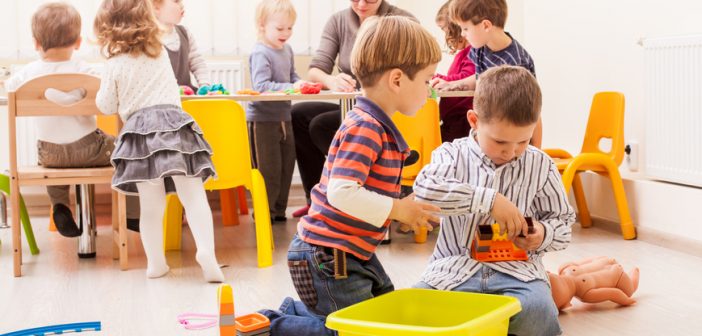This post is Sponsored By the Australian Government Department of Education and Training
Child care has been a big part of my life for the past 9 years. Our kids have gone to family day care, non-profit centres, for profit centres, large centres and small centres but the one thing that has remained consistent is that it costs lots of money.
We were lucky we only had 2 children in child care at the same time for 2 years because child care x 2 kids can get quite expensive. Having said that, I am also so grateful for child care as it gave me the time and space I needed as a mum to focus on other areas of my life, like my work.
I understand there is always a lot of conversation out there about how expensive child care is but it has always made sense to me because the ratios of adult per child are quite high. In schools it can be 25 or 30 children to one adult however in child care it is between 4-11 children to one adult. That’s why it costs so much, the ratios are so much smaller than schools as little kids need way more attention and help than bigger kids and people cost money.
Services such as long day care, family day care and outside school hours care (OSHC) provide an important service to families. However, the cost of child care can be expensive, even with Government assistance.
As of 2 July 2018, there will be a New Child Care Package, replacing the somewhat complicated Child Care Benefit and Child Care Rebate with a single Child Care Subsidy, which is better targeted to support low to middle income families.
Similar to the existing payments, it is income and activity tested. The subsidy is based on an hourly rate cap, dependent on service type.

What does the change mean for your family?
I personally am very happy with these changes as we will go from getting 50% of our child care fees back to 60% from 2 July this year based on the Family Child Care Subsidy Estimator.
The other great thing to note is there is no longer a $7,613 annual cap for those who earn $185,710^ or less. So if this is you and you run out of the Child Care Rebate before the end of financial year you will get the Child Care Subsidy for the entire year (or as much as you use a child care service within the financial year).
The percentage of subsidy families will receive works on a sliding scale based on income. If your entire family income is less than $65,710^ a year you will get a subsidy of 85% of the actual fee charged back.
For families who earn between $65,710^ and $350,000^ the subsidy gradually decreases from 85% to 20%.
If your annual family income is $350,000^ or over then the subsidy is 0%.
The amount of activity (such as work, training, study and volunteering) a family undertakes can have an impact on how many hours of subsidised child care you can get. Also the type of childcare you use will also determine what hourly rate cap you will get, as different child care services have different rate caps, which the subsidy is based around.
The great thing is you can check out the Family Child Care Subsidy Estimator to get an idea of how your current payments will be impacted.
The New Child Care Package also has a Child Care Safety Net to help disadvantaged children access quality child care. Part of the Child Care Safety Net is the Additional Child Care Subsidy which provides support for children’s safety and wellbeing, grandparents who are primary carers, families in financial hardship and families transitioning to work.
Anything that makes childcare more accessible and affordable is a win for all parents I think. Make sure you check out how it will impact your family by using the estimator and hopefully you will have good news like we did. For further information on the New Child Care Package and what you need to do visit: education.gov.au/childcare
^These figures may be subject to adjustment through indexation.


2 Comments
Let’s not forget about those mums who can also double dip, teachers and nurses whom have access to an extra 8 months of PAID maternity leave. This is a truely unfair system
School Mum, thanks so much for the post.Really thank you! Great.